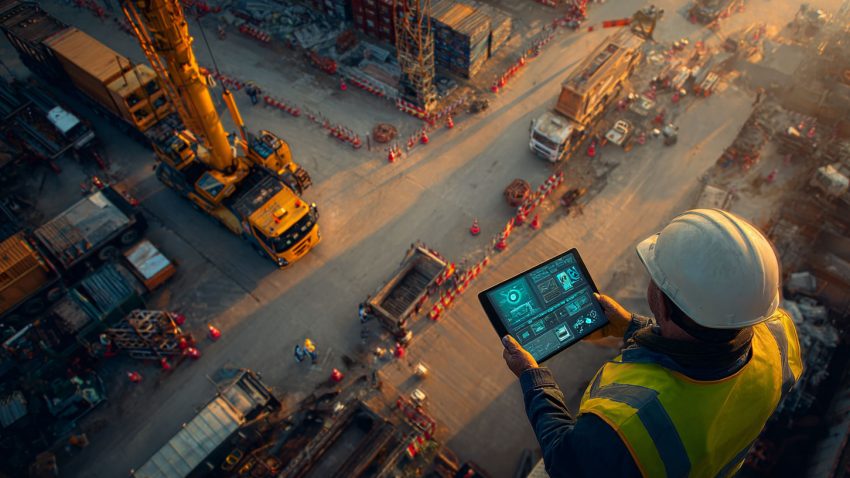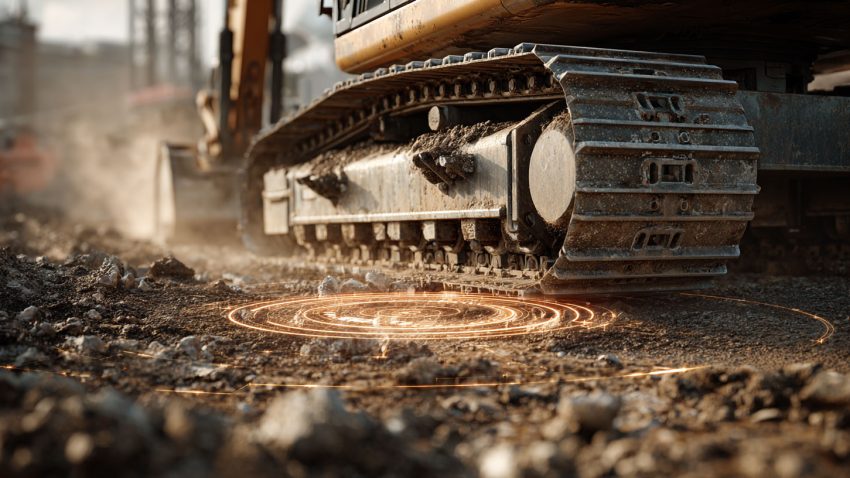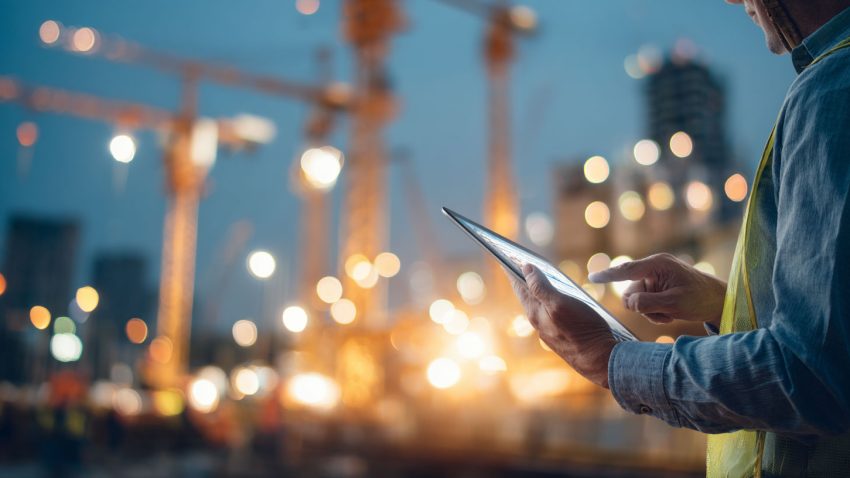Top 10 Applications of Drones in Commercial Construction
Table of Contents:
The construction industry is soaring to new heights with the introduction of drones. These high-flying helpers are revolutionizing commercial construction in ways we never imagined. Let’s explore even further into the vast possibilities that drones bring to the table.
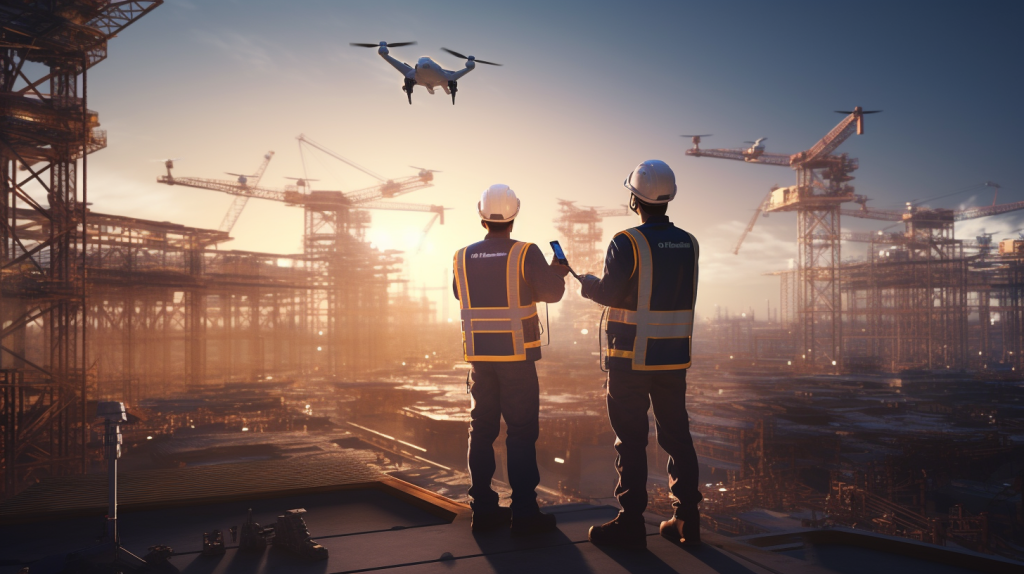
Drone Applications for Enhancing Commercial Construction Project Management
Construction Project management is a critical component of construction, and drones are making it more efficient than ever. By providing real-time aerial views, drones help project managers to make informed decisions quickly. This bird’s-eye perspective is invaluable for tracking progress, allocating resources, and identifying potential issues before they become major problems. Imagine linking this capability to your project management tools, transforming the way you oversee construction projects.
Drone Applications in Architectural Design and Construction Planning
Believe it or not, drones are playing a significant role in architectural design and planning. By capturing detailed aerial images and generating 3D models, architects can now visualize their designs in the actual environment. This integration of drone technology in architectural planning allows for more accurate and creative designs, enhancing the aesthetics and functionality of the buildings.
Improving Communication with Site Teams
Communication is key on a construction site, and drones are making it easier. With the ability to capture and share real-time images and videos, drones facilitate better communication between site teams, architects, and clients. This not only improves understanding and collaboration but also helps in keeping everyone updated on the project’s progress. Integrating drone footage into your communication tools can significantly enhance the efficiency of your construction projects.
Drones and Environmental Compliance
In today’s world, environmental compliance is more important than ever. Drones help in monitoring environmental impact during construction. They can survey protected areas, track changes in local wildlife, and ensure that environmental regulations are being followed. This is crucial for maintaining sustainability in construction practices and for meeting regulatory standards.
Drone Use in Construction Site Security and Surveillance
Drones also play a crucial role in site security and surveillance. They can be deployed to monitor construction sites, especially after hours, to prevent theft or vandalism. This added layer of security ensures that your construction site is protected around the clock, providing peace of mind and potentially reducing insurance costs.
Related Articles:
Best Guide to Construction Management Software
Drones in Construction: Top Ways They Enhance Safety and Minimize Risks
Optimizing Construction Logistics and Supply Chain Management
Managing logistics and the supply chain is a complex task in construction. Drones offer a unique solution by tracking material deliveries, monitoring storage conditions, and ensuring that the right materials are at the right place at the right time. This optimization of logistics leads to smoother operations and can significantly reduce downtime and costs.
Drone Applications in Disaster Response and Emergency Management
In case of a disaster or emergency at a construction site, drones can be first responders. They provide a quick assessment of the situation, helping in coordinating emergency response efforts effectively. This not only aids in minimizing damage but also ensures the safety of workers and first responders.
Drone Training and Educational Opportunities in Construction
The rise of drones in construction opens up new avenues for training and education. Construction professionals can now be trained in drone piloting and data analysis, adding valuable skills to their repertoire. Educational institutions are also incorporating drone technology into their curricula, preparing the next generation of construction professionals.
Drones for Infrastructure Inspection and Maintenance
Drones are invaluable for inspecting and maintaining infrastructure like bridges, highways, and tall buildings. Their ability to reach difficult areas and capture high-quality images makes them perfect for ensuring that our infrastructure is safe and well-maintained.
The Future of Drones in Construction
The potential of drones in construction is vast and still unfolding. As technology advances, we can expect drones to become even more integrated into various construction processes. From AI-enhanced analytics to improved battery life and beyond, the future of drones in construction is bright and promising.
In conclusion, the introduction of drones in commercial construction is more than just a technological advancement; it’s a revolution in how we build and manage our environments. From enhancing project management to ensuring environmental compliance, drones are setting new standards in the construction industry. As we continue to explore and integrate these versatile tools, the possibilities for innovation and efficiency are limitless.
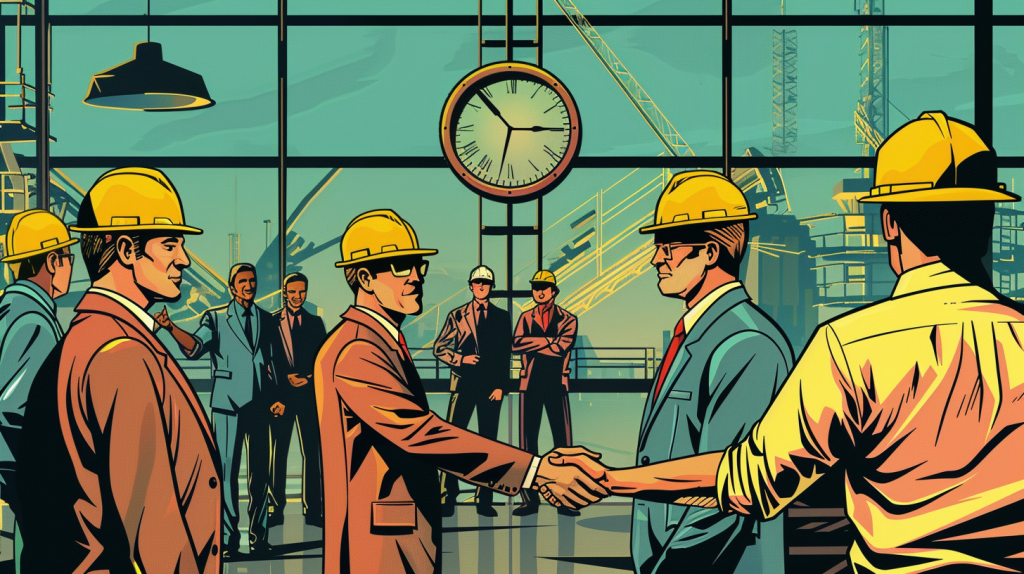
StruxHub
Discover how StruxHub can revolutionize your construction management. Contact us today!
The construction industry is soaring to new heights with the introduction of drones. Let’s dive into the top 10 ways these high-flying helpers are revolutionizing commercial construction!
1. Site Surveying and Mapping
A Bird’s Eye View: Drones have changed the game in site surveying. With their ability to capture high-resolution images, they can create detailed maps and 3D models of a construction site in a fraction of the time it takes using traditional methods. This means more accurate planning and fewer surprises down the road.
2. Inspection of Hard-to-Reach Areas
Reaching the Unreachable: Drones excel in inspecting areas that are tough or dangerous for humans to access. Think about high-rise structures or complex roofing. Drones can easily zip up there, capturing images and video for a thorough inspection without putting anyone at risk.
3. Progress Monitoring
Keeping an Eye on the Prize: Drones provide real-time, bird’s-eye views of the construction progress. This isn’t just cool to look at; it’s invaluable for project managers who need to keep track of everything and ensure the project is moving along as planned.
4. Equipment Tracking
Never Lose Sight: Misplaced equipment on large sites? Drones can help track and monitor the location of construction equipment, ensuring everything is where it should be and reducing the risk of theft or misplacement.
5. Safety Compliance Monitoring
Safety First: Using drones to monitor safety compliance is like having an extra set of eyes that never blink. They can ensure that safety protocols are being followed, reducing the risk of accidents and keeping everyone safe on site.
6. Enhanced Communication and Collaboration
Bringing Teams Together: By providing aerial photos and videos, drones facilitate better communication and collaboration among team members. They help everyone stay on the same page, regardless of their physical location.
7. Marketing and Client Updates
Show and Tell: Drones can capture stunning footage and images that can be used for marketing purposes or for keeping clients updated on the progress of their project. It’s an impressive way to showcase your work and keep clients engaged.
8. Thermal Imaging
Seeing the Unseen: Equipped with thermal cameras, drones can detect issues that aren’t visible to the naked eye, like heat leaks or electrical faults. This can be a game-changer for identifying potential problems early on.
9. Environmental Impact Assessment
Green Watchdogs: Drones can play a crucial role in monitoring the environmental impact of a construction project. They can track changes in vegetation, waterways, and wildlife habitats, ensuring that the project adheres to environmental standards.
10. Disaster Response and Risk Assessment
Rapid Response: In the event of a natural disaster or emergency, drones can quickly assess damage, identify risks, and help in planning a coordinated response. They can reach areas that may be inaccessible to rescue teams, providing crucial information in critical times.
Drones in commercial construction aren’t just about cool technology; they’re about smarter, safer, and more efficient construction practices.
Related Articles:
Mastering Delivery Scheduling in Construction: Best Techniques and Tools for Materials Deliveries
The Ultimate Guide to Construction Risk Management: Top Strategies and Tools
Unlock the Full Potential of Your Construction Projects with StruxHub
StruxHub enhances efficiency and coordination across all project phases, providing a single source of truth that eliminates silos and fosters collaboration. Real-time updates, financial management tools, and seamless commvunication features ensure that all team members and stakeholders are aligned and informed, reducing the risk of errors and delays. With comprehensive solutions for document management, risk mitigation, and quality control, StruxHub maintains project integrity and safety, while mobile access and integration capabilities further enhance project flexibility and efficiency.
StruxHub’s Key Features and Benefits:
- Advanced Delivery Management: Automate and optimize your delivery schedules, ensuring materials arrive just in time, every time.
- Site Communication: Utilize georeferenced maps and instant messaging to keep every team member informed and aligned.
- Construction Materials Management: Track inventory levels and manage materials procurement with ease, reducing waste and avoiding project delays.
- Construction Safety & Inspection Workflows: Implement customizable mobile forms for conducting safety inspections and managing compliance documentation effortlessly.
- Short-Term Scheduling: Visualize project tasks with detailed floor plans, linking each activity to specific locations for better planning accuracy.
- Construction Resource Management: Efficiently allocate personnel and equipment, maximizing productivity and reducing idle time.
StruxHub’s Product Offering:
- StruxHub Deliveries: Simplifies the coordination of incoming deliveries, ensuring materials and equipment are precisely timed to project needs.
- StruxHub Logistics: Offers intelligent site logistics planning, from crane scheduling to space allocation, for smoother operations.
- StruxHub Safety: Elevates on-site safety standards with easy-to-use tools for inspections, permits, and incident reporting.
- StruxHub Scheduling: Enhances project timelines with intuitive scheduling tools that ensure tasks are completed efficiently and on time.
With StruxHub, construction companies can look forward to a streamlined, more efficient project execution that delivers on time and within budget. Embrace the power of innovation and take your construction projects to the next level.
Don’t miss out on the opportunity to optimize your construction management processes with StruxHub. Sign up for a free demo today. Let’s build smarter, together.

StruxHub
Discover how StruxHub can revolutionize your construction management. Contact us today!
FAQ
1. How Can Drones Improve Project Management in Commercial Construction?
Drones have become an indispensable tool in commercial construction project management, offering real-time aerial data and advanced analytics that were previously impossible or prohibitively expensive to obtain. By providing an overhead view of the construction site, drones allow project managers and superintendents to track progress, monitor equipment placement, and identify potential bottlenecks or hazards. This high-level perspective ensures resources are allocated effectively and that potential risks are mitigated before they escalate into costly issues. Furthermore, the ability to collect real-time footage and images helps project managers make data-driven decisions instantly, rather than relying on delayed updates or outdated information.
Beyond tracking physical progress, drones are also invaluable for documentation and compliance purposes. They can capture detailed imagery for compliance reports, insurance claims, and stakeholder updates, ensuring transparency and accountability throughout the project lifecycle. Integrating drone data with construction management software further enhances the value, allowing seamless updates to schedules, resource management plans, and safety protocols. In a competitive industry where delays and inefficiencies can lead to significant financial loss, drones give construction managers the tools to maintain control and visibility across every phase of the project, ultimately driving efficiency and profitability.
2. What Are the Top Benefits of Using Drones for Site Inspections?
Drones have revolutionized construction site inspections, offering an efficient, cost-effective, and safer alternative to traditional inspection methods. One of the key advantages is their ability to access hard-to-reach or hazardous areas without putting human lives at risk. Inspecting high-rise structures, scaffolding, or steep inclines traditionally requires scaffolding, cranes, or even rope access. With drones, construction teams can capture high-resolution images and videos in real-time without endangering personnel. These inspections are not only faster but also provide far more detailed visual data than manual inspections.
Additionally, drones allow construction supervisors to conduct frequent inspections without disrupting site activities. Regular aerial assessments ensure quality control, detect deviations from plans, and help teams stay aligned with project specifications. In the case of larger infrastructure projects, drones significantly reduce the time and resources required to inspect expansive areas. Furthermore, the collected drone data can be integrated with 3D modeling and Building Information Modeling (BIM) software, offering advanced analytics and insights for more precise decision-making. As a result, drones ensure site inspections are more accurate, faster, and safer, setting new benchmarks for efficiency in commercial construction.
3. How Do Drones Improve Communication Between Site Teams and Stakeholders?
Effective communication is one of the biggest challenges on construction sites, especially on large-scale commercial projects with multiple teams, subcontractors, and stakeholders. Drones bridge this communication gap by providing real-time aerial imagery and video footage that can be easily shared with all relevant parties. Whether it’s updating stakeholders on project progress or briefing site teams on new safety measures, drones offer visual clarity that traditional communication tools cannot match. Visual updates are particularly useful in helping non-technical stakeholders understand complex construction challenges and timelines.
Moreover, drone footage can be integrated with construction management platforms, creating a unified hub where everyone can access the latest site visuals, reports, and updates. This reduces misunderstandings, minimizes delays caused by poor communication, and ensures all stakeholders are on the same page. Supervisors can also use drone footage during team meetings to highlight problem areas, demonstrate progress, and assign tasks more effectively. By enhancing transparency and reducing miscommunication, drones play a pivotal role in fostering better collaboration and accountability across all levels of a construction project.
4. Are Drones Cost-Effective for Commercial Construction Projects?
While the initial investment in drone technology and operator training might seem substantial, the long-term cost savings far outweigh the upfront costs. Drones drastically reduce the need for expensive equipment such as cranes, scaffolding, or helicopters for aerial surveying and inspections. Tasks that would typically require multiple workers, days of setup, and significant resources can now be completed in a fraction of the time with a single drone operator. Additionally, the ability to identify and address potential problems early through drone data prevents costly rework, delays, and budget overruns.
Furthermore, drones contribute to insurance cost reductions and liability management by enhancing site safety and minimizing risks associated with manual inspections. Insurers often offer favorable rates to construction firms employing drone surveillance due to the lower likelihood of accidents and property damage. Real-time drone monitoring also reduces material theft and site vandalism, saving additional costs in the long run. For supervisors and project managers, drones represent an investment in efficiency, safety, and risk management, all of which directly translate into measurable financial benefits over time.
5. What Are the Key Regulatory Requirements for Using Drones on Construction Sites?
Operating drones on construction sites comes with regulatory responsibilities that supervisors and operators must carefully follow to ensure compliance. In the United States, the Federal Aviation Administration (FAA) requires all commercial drone operators to obtain a Part 107 Remote Pilot Certificate. This involves passing a knowledge test that covers airspace regulations, weather conditions, and operational guidelines. Additionally, drones must be registered with the FAA, and operators must follow specific altitude, visibility, and operational rules, including avoiding restricted airspace and keeping the drone within the operator’s line of sight.
Moreover, supervisors must consider site-specific policies and permits for drone usage, especially on projects near airports, government facilities, or environmentally sensitive areas. Many construction firms also require drone operators to carry liability insurance to cover potential accidents or damages caused during drone operations. Beyond legal compliance, site managers must establish clear safety protocols for drone flights, including pre-flight risk assessments and notifying workers of drone activity. By staying informed and adhering to these regulations, construction managers can fully leverage drone technology without legal or operational setbacks.
